 W
WThe military history of Brazil comprises centuries of armed actions in the territory encompassing modern Brazil, and the role of the Brazilian Armed Forces in conflicts and peacekeeping worldwide. For several hundreds of years, the area was the site of intertribal wars of indigenous peoples. Beginning in the 16th century, the arrival of Portuguese explorers led to conflicts with the aboriginal peoples; a notable example being the revolt of the Tamoio Confederation. Sporadic revolts of African slaves also marked the colonial period, with a notable rebellion led by Zumbi dos Palmares. Conflicts were encountered with other European nations as well – two notable examples being the France Antarctique affair, and a conflict with the Netherlands in the early 17th century over control of much of the Northeast. Although Portugal retained its possessions during conflicts with other nations, it lost control of the colony after the Brazilian war of Independence, which led to the establishment of the Empire of Brazil.
 W
WThe 18 of the Copacabana Fort revolt occurred on July 5, 1922, in the city of Rio de Janeiro, then the Federal District of Brazil. It was the first revolt of the tenentista movement, in the context of the Brazilian First Republic.
 W
WAntônio de Siqueira Campos was a leader and one of two survivors of a military revolt that occurred in July 1922 on Copacabana Beach in Rio de Janeiro, Brazil, which became known as the 18 of the Copacabana Fort revolt. Following release from prison he took part in further rebellions including the so-called Prestes Column from 1925 to 1927. Siqueira Campos was born in Rio Claro in the Brazilian state of São Paulo on 18 May 1898 and died in Uruguay in a plane crash on 10 May 1930.
 W
WThe Araguaia guerrilla was an armed movement in Brazil against its military dictatorship, active between 1967-1974 in the Araguaia river basin. It was founded by militants of the Communist Party of Brazil, the then Maoist counterpart to the Brazilian Communist Party (PCB), which aimed at establishing a rural stronghold from whence to wage a "people's war" against the Brazilian military dictatorship, which had been in power since the 1964 coup d'état. Its projected activities were based on the successful experiences led by the 26th of July Movement in the Cuban Revolution, and by the Communist Party of China during the Chinese Civil War.
 W
WThe Armed Forces of the Empire of Brazil were the overall unified military forces of the Empire of Brazil. The Brazilian military was first formed by Emperor Dom Pedro I to defend the new nation against the Portuguese in the Brazilian War of Independence. The Army and Armada were commissioned in 1822 with the objective of defeating and expelling the Portuguese troops from Brazilian soil.
 W
WThe Imperial Brazilian Army was the name given to the land force of the Empire of Brazil. The Brazilian Army was formed after the independence of the country from Portugal in 1822 and reformed in 1889, after the republican coup d'ètat that created the First Brazilian Republic, a dictatorship headed by the army.
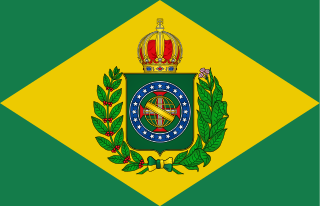 W
WThe Imperial Brazilian Navy was the navy created at the time of the independence of the Empire of Brazil from the United Kingdom of Portugal, Brazil and the Algarves. It existed between 1822 and 1889 during the vigency of the constitutional monarchy. The Navy was formed almost entirely by ships, staff, organizations and doctrines proceeding from the transference of the Portuguese Royal Family in 1808. Some of its members were native-born Brazilians, who under Portugal had been forbidden to serve. Other members were Portuguese who adhered to the cause of separation and German and Irish mercenaries. Some establishments created by King João VI were used and incorporated. Under the reign of Emperor Pedro II the Navy was greatly expanded to become the fifth most powerful navy in the world and the armed force more popular and loyal to the Brazilian monarchy. The republican coup d'état in 1889, led by army men, put an end to the Imperial Navy that fell into decay until the new century.
 W
WThe Battle of Rio de Janeiro was a raid in September 1711 on the port of Rio de Janeiro in the War of Spanish Succession by a French squadron under René Duguay-Trouin. The Portuguese defenders, including the city's governor and an admiral of the fleet anchored there, were unable to put up effective resistance in spite of numerical advantages.
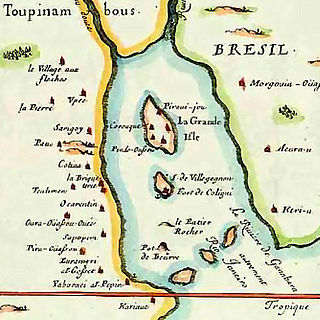 W
WThe Battle of Rio de Janeiro was a battle in 1558 on the French town at Rio de Janeiro, called Henriville. The Portuguese, though in far smaller numbers, defeated the French and made them flee to the jungle. The French town was then burnt by Mem de Sá, the Portuguese governor.
 W
WThe Battle of Rio de Janeiro or the Battle of Guanabara Bay was a battle on 20 January 1567 at Rio de Janeiro that ended with the definitive defeat of the French. Specifically, the battle was an attack on the fortification of Uruçú-mirim. The Portuguese commander, Estácio de Sá, was hit by an arrow which perforated his eye, and died on 20 February.
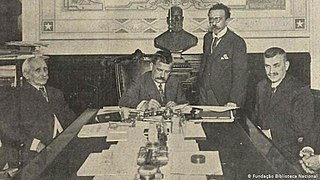 W
WDuring World War I (1914–1918), Brazil initially adopted a neutral position, in accordance with the Hague Convention, in an attempt to maintain the markets for its export products, mainly coffee, latex and industrial manufactured items. However, following repeated sinking of Brazilian merchant ships by German submarines, President Venceslau Brás declared war against the Central Powers in 1917. Brazil was the only country in Latin America to be directly involved in the war. The major participation was the Brazilian Navy's patrol of areas of the Atlantic Ocean.
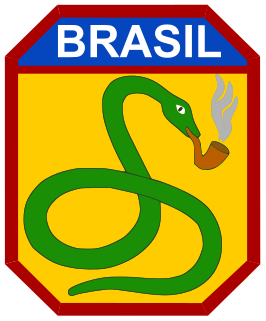 W
WThe Brazilian Expeditionary Force consisted of about 25,900 men arranged by the army and air force to fight alongside the Allied forces in the Mediterranean Theatre of World War II. This air–land force consisted of a complete infantry division, a liaison flight, and a fighter squadron.
 W
WThe Dutch–Portuguese War was an armed conflict involving Dutch forces, in the form of the Dutch East India Company and the Dutch West India Company, against the Portuguese Empire. Beginning in 1602, the conflict primarily involved the Dutch companies invading Portuguese colonies in the Americas, Africa, India and the Far East. The war can be thought of as an extension of the Eighty Years' War being fought in Europe at the time between Spain and the Netherlands, as Portugal was in a dynastic union with the Spanish Crown after the War of the Portuguese Succession, for most of the conflict. However, the conflict had little to do with the war in Europe and served mainly as a way for the Dutch to gain an overseas empire and control trade at the cost of the Portuguese. English forces also assisted the Dutch at certain points in the war. Because of the commodity at the center of the conflict, this war would be nicknamed the Spice War.
 W
WThe Federalist Riograndense Revolution (1893–1895) was a civil war which occurred in southern Brazil against the recently-formed Republic. Urged by the political crisis generated by the federalists, an opposition group that sought to liberate Rio Grande do Sul from the governance of Julio de Castilhos, then president of the state, and also gain greater autonomy and decentralize the power of the then newly proclaimed Republic.
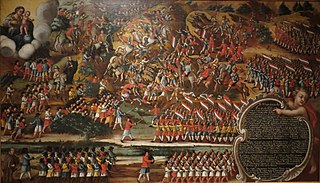 W
WThe First Battle of Guararapes was a battle in a conflict called the Pernambucana Insurrection, between Dutch and Portuguese forces in Pernambuco, in a dispute for the dominion of that part of the Portuguese colony of Brazil.
 W
WThe Second Battle of Guararapes was the second and decisive battle in a conflict called Pernambucana Insurrection, between Dutch and Portuguese forces in February 1649 at Jaboatão dos Guararapes in the Brazilian state of Pernambuco. The defeat convinced the Dutch "that the Portuguese were formidable opponents, something which they had hitherto refused to concede." The Dutch still retained a presence in Brazil until 1654 and a treaty signed in 1661.
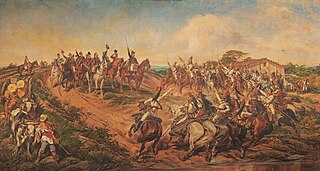 W
WThe Independence of Brazil comprised a series of political and military events that occurred in 1821–1824, most of which involved disputes between Brazil and Portugal regarding the call for independence presented by the Brazilian Empire.
 W
WThe steam corvette Jequitinhonha was a warship in the Imperial Brazilian Navy during the Paraguayan War. It took part in the Battle of Riachuelo.
 W
WThe Lobster War was a dispute over spiny lobsters which occurred from 1961 to 1963 between Brazil and France. The Brazilian government refused to allow French fishing vessels to catch spiny lobsters 100 miles (160 km) off the Brazilian northeast coast, arguing that lobsters "crawl along the continental shelf", while the French maintained that "lobsters swim" and that, therefore, they might be caught by any fishing vessel from any country. The dispute was resolved unilaterally by Brazil, which extended its territorial waters to a 200-mile zone, taking in the disputed lobsters' bed.
 W
WOperation Traíra was the response of the Brazilian Armed Forces, with support from the Colombian Army, to an attack on their detachment on the bank of the Traíra River by FARC in February 1991.
 W
WThe Battle of the Tonelero Pass, also known as Passage of the Tonelero, was a battle fought near the cliff of Acevedo, in the west bank of the Paraná River, Argentina, on 17 December 1851, between the Argentine Confederation Army commanded by Lucio Norberto Mansilla and warships of the Brazilian Imperial Navy led by John Pascoe Grenfell.
 W
WThe Portuguese invasion of the Banda Oriental was a short-lived and failed attempt, beginning in 1811 and ending the following year, by the Portuguese Empire to annex the remaining territory of the Spanish Viceroyalty of the Río de la Plata.
 W
WThe Portuguese conquest of the Banda Oriental was the armed-conflict that took place between 1816 and 1820 in the Banda Oriental, for control of what today comprises the whole of the Republic of Uruguay, the northern part of the Argentine Mesopotamia and southern Brazil. The four-year armed-conflict resulted in the annexation of the Banda Oriental into the United Kingdom of Portugal, Brazil and the Algarves as the Brazilian province of Cisplatina.
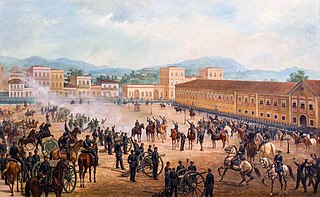 W
WThe Proclamation of the Republic was a military coup d'état that established the First Brazilian Republic on 15 November 1889. It overthrew the constitutional monarchy of the Empire of Brazil and ended the reign of Emperor Pedro II.
 W
WThe Revolt of the Lash was a naval mutiny in Rio de Janeiro, Brazil, in late November 1910. It was the direct result of the use of whips ("lashes") by white naval officers when punishing Afro-Brazilian and mulatto enlisted sailors.
 W
WThe Brazilian Naval Revolts, or the Revoltas da Armada, were armed mutinies promoted mainly by Admirals Custódio José de Melo and Saldanha Da Gama and their fleet of Brazilian Navy ships against the unconstitutional staying in power of the central government in Rio de Janeiro.
 W
WThe Siege of Paysandú began 3 December 1864, during the Uruguayan War, when Brazilian forces and Colorado forces attempted to capture the city of Paysandú in Uruguay from its Uruguayan Army defenders. The siege ended 2 January 1865, when the Brazilian and Colorado forces conquered the town.
 W
WThe Siege of Salvador occurred during the Brazilian War of Independence, during which the Brazilian Army, under Pierre Labatut, attempted to capture the city of Salvador in Bahia from its Portuguese Army defenders. The siege lasted from 2 March 1822 until 2 July 1823, finally ending when the Portuguese commander, Inácio Luís Madeira de Melo, surrendered his forces to the Brazilians.
 W
WA naval arms race among Argentina, Brazil and Chile—the most powerful and wealthy countries in South America—began in the early twentieth century when the Brazilian government ordered three dreadnoughts, formidable battleships whose capabilities far outstripped older vessels in the world's navies.
 W
WGerman submarine U-507 was a Type IXC U-boat of Nazi Germany's Kriegsmarine built for service in the Second World War and the Battle of the Atlantic. She was mainly notable for two patrols she conducted during the "Second Happy Time" in mid-1942, during the first of which she caused havoc in the Gulf of Mexico amongst unprotected American shipping, and then in the second she attacked ships along the coast of Brazil, in an inexplicable and shocking attack on a neutral nation's shipping in its own waters which almost single-handedly provoked the Brazilian declaration of war on Germany.
 W
WThe Uruguayan War was fought between Uruguay's governing Blanco Party and an alliance consisting of the Empire of Brazil and the Uruguayan Colorado Party, covertly supported by Argentina. Since its independence, Uruguay had been ravaged by intermittent struggles between the Colorado and Blanco factions, each attempting to seize and maintain power in turn. The Colorado leader Venancio Flores launched the Liberating Crusade in 1863, an insurrection aimed at toppling Bernardo Berro, who presided over a Colorado–Blanco coalition (fusionist) government. Flores was aided by Argentina, whose president Bartolomé Mitre provided him with supplies, Argentine volunteers and river transport for troops.